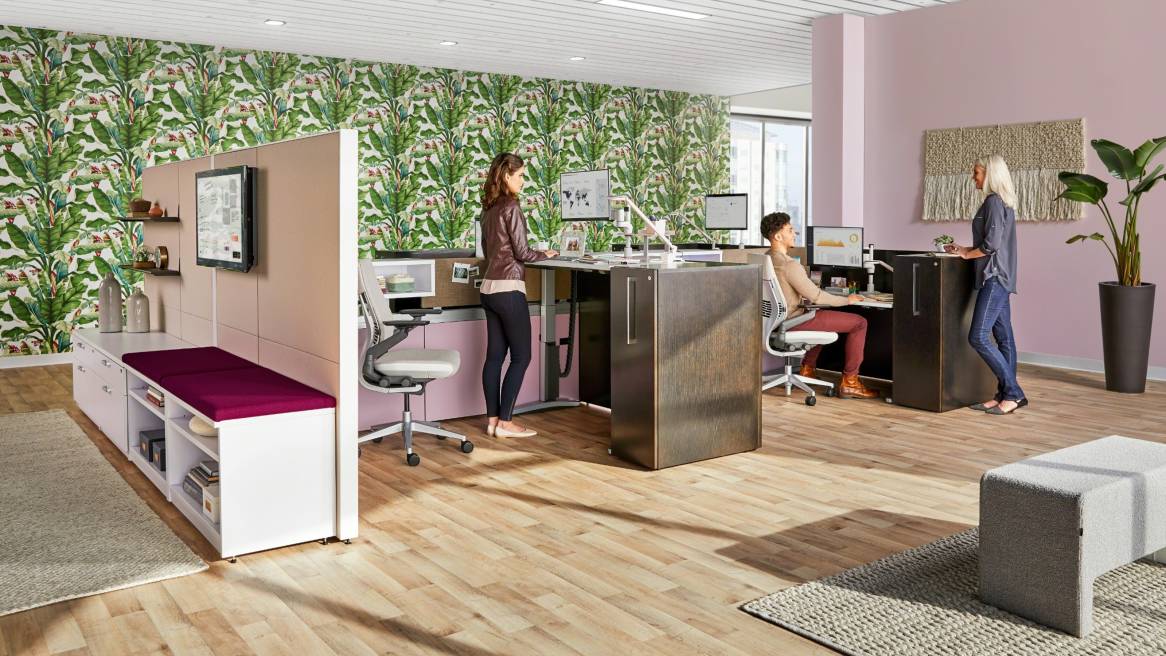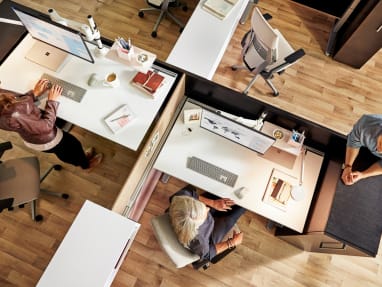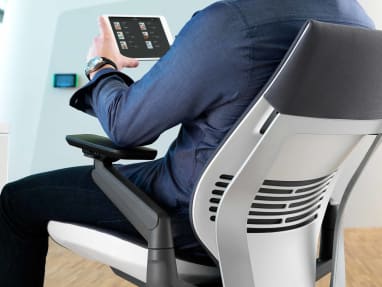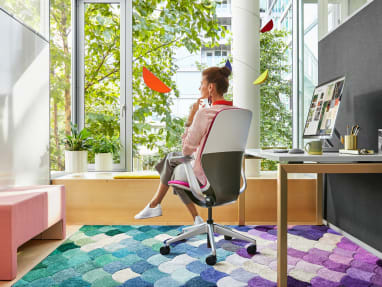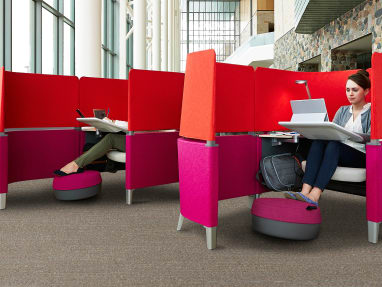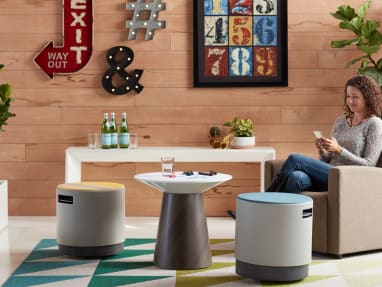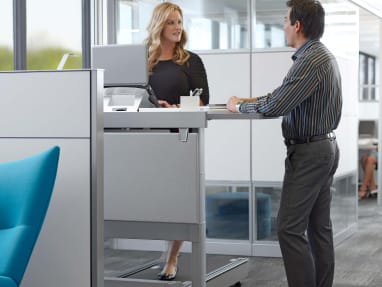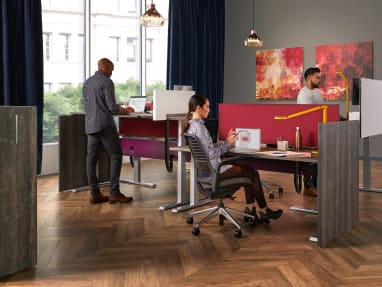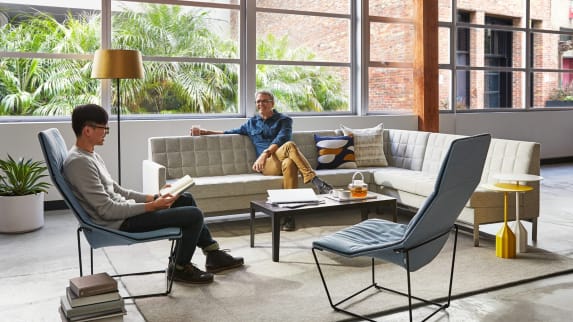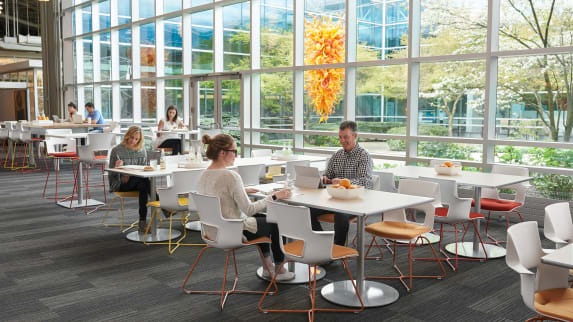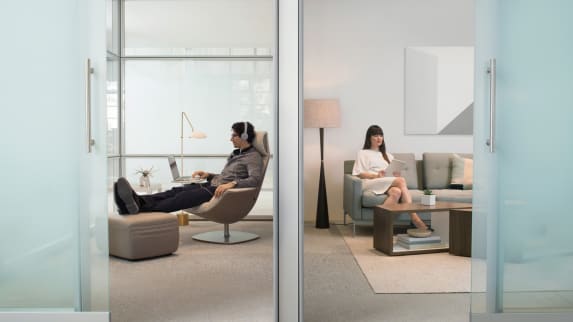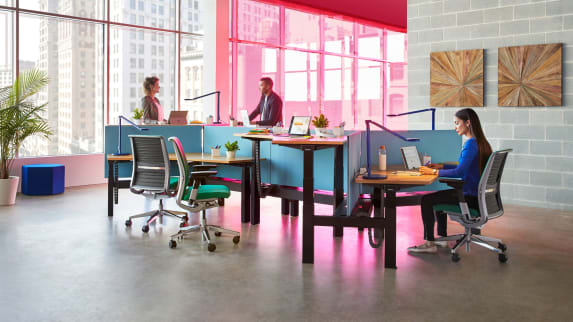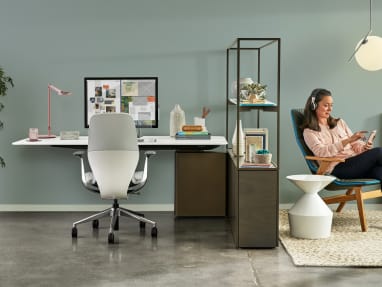It takes more than just ergonomic furniture and a fitness center to achieve wellbeing at work. It’s about creating a culture of wellbeing where people can move, think and feel better.
Wellbeing
With health issues like heart disease and obesity on the rise, it’s important for employers to look for ways to help their people be as healthy as possible- physically, cognitively and emotionally.
The rise of ergonomics in the 1980s helped us improve our understanding of biomechanics and the importance of providing posture support. But the workplace has evolved a lot since then and people are no longer spending all their time sitting at their desk. As mobile technology became more common, new research emerged supporting the importance of movement and providing multiple postures.
Today, work is more complex than ever. And most workplaces are full of distractions. People need access to spaces where they can focus and escape from the cognitive overload they face every day. They also need a more human-focused workplace where they feel great about their work and about their company. And employers need to take an active role in evaluating how their environment promotes wellness and wellbeing at work.
Learn more about our point of view on wellbeing in the office:
Wellbeing: A Bottom Line Issue
Driving the need for these skills is the complexity of problems that organizations face today, and the demand for innovation that is no longer the turf of elite, top brands.
Restoration Office
By incorporating four key ways humans interact with nature, biophilic design can mimic its effects and greatly enhance our wellbeing. Learn how biophilia reduces stress and promotes renewal at work.

